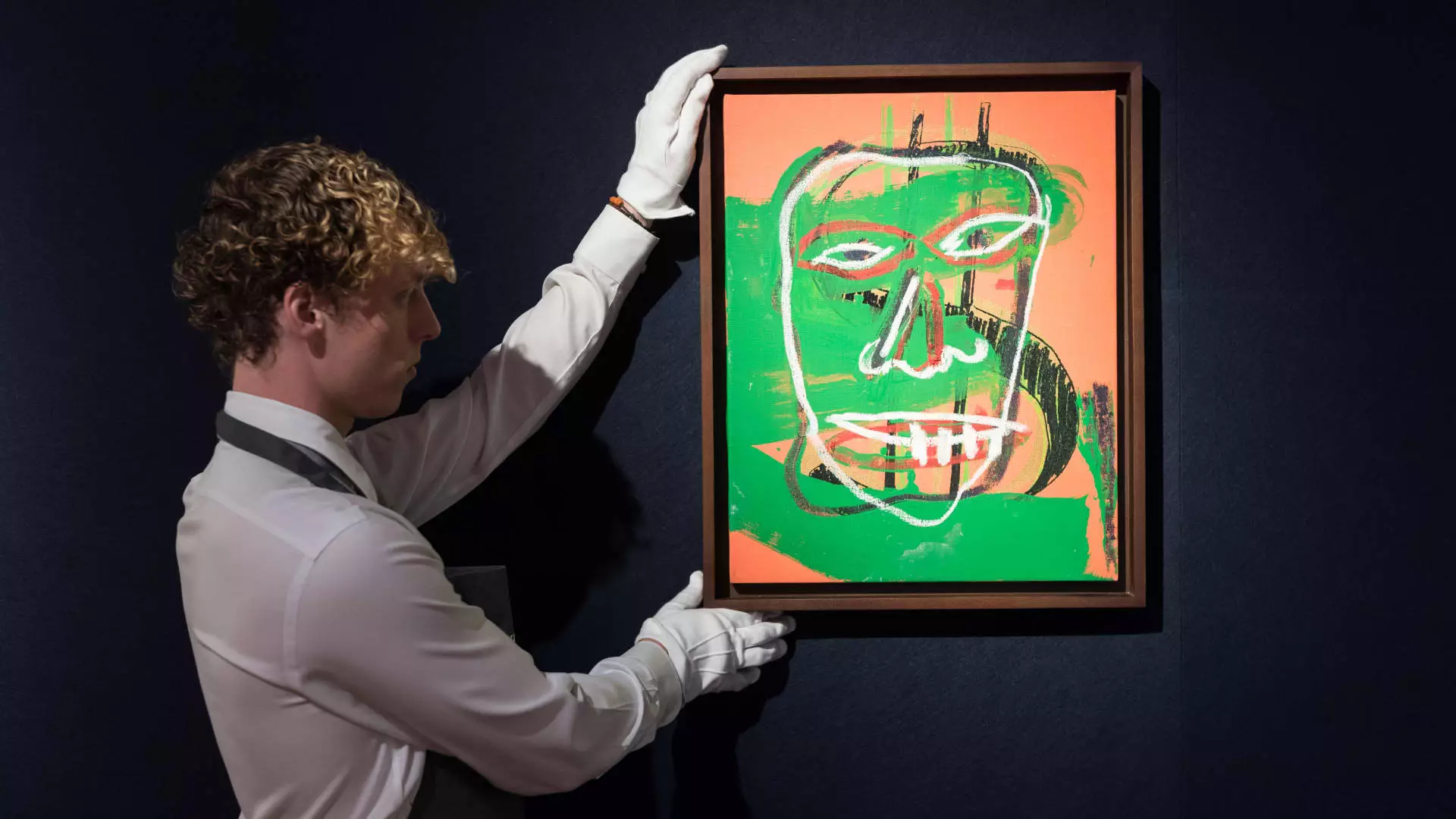The global art market is currently experiencing significant contraction, evidenced by a reported decline in auction sales. Data from various renowned auction houses, such as Christie’s and Sotheby’s, reveals that the combined auction revenues have plunged by up to 36% since their peak in 2021. This downturn seems to stem from a shift in buyer demographics and preferences, with noticeable hesitance from traditional buyers. The recent survey conducted by Art Basel and UBS highlights that only 43% of wealthy collectors intend to purchase art in the upcoming year, a stark contrast to the over 50% participation reported previously.
Beyond mere figures, this contraction suggests a seismic shift in the art-buying community. The parallel rise in those planning to sell, reaching 55%, indicates a looming imbalance affecting supply and demand in the market. Paul Donovan, the chief economist at UBS Global Wealth Management, notes that even high-net-worth individuals are adopting a more circumspect spending behavior in the art arena. They are no longer seeking extravagant acquisitions but rather adopting a more strategic approach to curating their collections.
Generational Transition and Buyer Preferences
The aforementioned survey illuminates an intriguing aspect of the current market: an evolving generational landscape. The influx of younger collectors, primarily from Generation X and millennials, indicates a departure from the traditional buyers who once dominated the high-end art sector. These new entrants tend to gravitate towards lower-priced works, shifting the focus from the high-stakes purchases that characterized past years. While older collectors may be downsizing their collections and selling off mid-tier works, younger generations are nurturing a preference for accessible art, often valuing modern creations from emerging artists over established classics.
This generational shift generates an oversupply in certain market segments, particularly regarding Impressionist and Abstract works priced at seven to eight figures. The survey makes it clear that even at the high end, where art valued above $10 million was once robust, demand has started to wane. This indicates a profound transformation in the art ecosystem—a transition marked not just by changing tastes but also by new financial restraints that characterize younger collectors.
Compounding the issues faced by the art market are broader economic challenges. Ongoing geopolitical tensions—especially in regions like the Middle East and Ukraine—as well as economic instability in Europe and China, are undermining buyer confidence across wealth spectrums. The environment of rising interest rates further complicates matters. As wealthy individuals perceive a lucrative yield from safer investment options like Treasurys, art becomes less appealing as a speculative asset or status symbol.
These economic realities, coupled with a general inclination toward risk aversion, position art as a less enticing investment. The notion of art as a financial asset is now fraught with questions about its long-term viability. The findings that the average allocation of art in collectors’ portfolios has dropped from 22% in 2021 to just 15% in 2024 highlights this reevaluation.
An insightful aspect of the survey is the expressed concerns of wealthy collectors regarding future trends in the art market. The factors cited include the growing barriers to the international movement of art, the implication of legal issues such as restitution and forgery cases, and ethical considerations surrounding artist compensation. Such apprehensions not only underscore the complexities of the art trade but also reflect a broader awareness of the market’s pitfalls and volatility.
Interestingly, the art collection continuum faces an impending demographic shift, often referred to as the “great wealth transfer.” As older collectors pass down artworks, potentially transformative changes in the ownership landscape loom. Despite the assumption that inherited artworks would lead to bulk sales by younger generations, the survey indicates that 72% of inheriting collectors retain at least some of the pieces, even as they grapple with space limitations and tax implications.
As the art market braces for its uncertainty, several prevailing themes emerge, from changing buyer demographics to wider socioeconomic influences. The decline in high-end sales, alongside an increase in selling activity, highlights a potential shift in the collector mindset—one that values accessibility over exclusivity. While optimism still abounds, with a majority of collectors expressing positive long-term sentiments, the immediate future may see rarefied values and increased caution.
Ultimately, the art space stands at a crossroads. The challenge will be navigating the complex interplay of evolving tastes, economic pressures, and the influence of a new generation of collectors. As the market adapts, not just to economic trends but also to shifting ethical and cultural expectations, its resilience will be tested in unforeseen ways. The coming years will reveal whether the art world can effectively bridge the gap between its storied past and an uncertain but potentially vibrant future.

